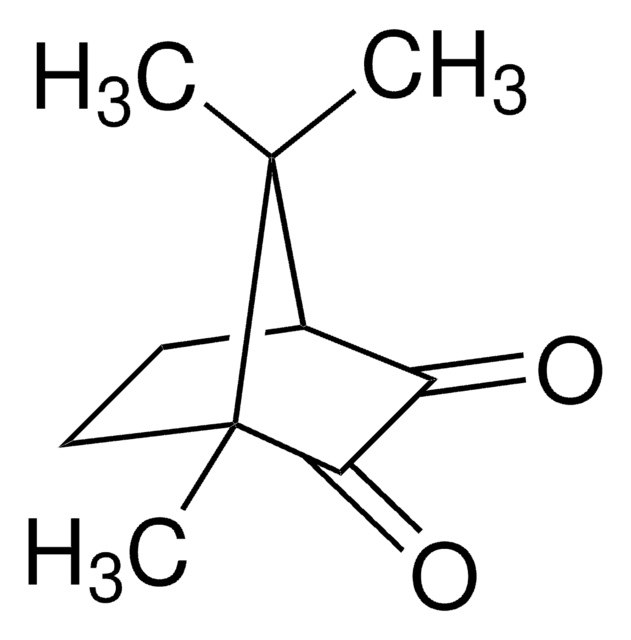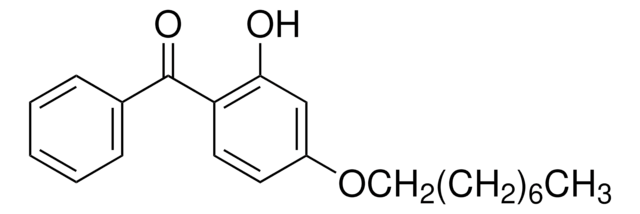品質等級
化驗
99%
形狀
liquid
包含
200 ppm monomethyl ether hydroquinone as inhibitor
反應適用性
reagent type: cross-linking reagent
reaction type: Polymerization Reactions
折射率
n20/D 1.461 (lit.)
n/D 1.4613
bp
170-172 °C/5 mmHg (lit.)
密度
1.092 g/mL at 25 °C (lit.)
1.074 g/mL
聚合物結構
shape: linear
functionality: homobifunctional
儲存溫度
2-8°C
SMILES 字串
CC(=C)C(=O)OCCOCCOCCOC(=O)C(C)=C
InChI
1S/C14H22O6/c1-11(2)13(15)19-9-7-17-5-6-18-8-10-20-14(16)12(3)4/h1,3,5-10H2,2,4H3
InChI 密鑰
HWSSEYVMGDIFMH-UHFFFAOYSA-N
尋找類似的產品? 前往 產品比較指南
一般說明
Triethylene glycol dimethacrylate is used as a cross-linking agent in the synthesis of poly (methacrylic acid-g-ethylene glycol ) hydrogels which shows large changes in swelling due to changes in pH, temperature and solvent composition. They are also used as a divinylic methacrylic monomer which are widely used to form copolymers with divinylbenzene (DVB) and glycidyl methacrylate (GMA) or hydroxyethyl methacrylate (HEMA) comonomers.
應用
- Used as a diluent comonomer in dimethacrylate based dental composites.
- Used as a branching agent in the atom transfer radical polymerization (ATRP) of styrene.
特點和優勢
Lower viscosity compared to other dimethacrylate monomers enabling higher amounts of filler to be incorporated in dental composites. Non-toxic and can be rapidly polymerized in the presence of oxygen and water.
訊號詞
Warning
危險聲明
危險分類
Skin Sens. 1
儲存類別代碼
10 - Combustible liquids
水污染物質分類(WGK)
WGK 1
閃點(°F)
332.6 °F - closed cup
閃點(°C)
167 °C - closed cup
分析證明 (COA)
輸入產品批次/批號來搜索 分析證明 (COA)。在產品’s標籤上找到批次和批號,寫有 ‘Lot’或‘Batch’.。
客戶也查看了
I Sideridou et al.
Biomaterials, 23(8), 1819-1829 (2002-04-13)
In this work the room-temperature photopolymerization of Bis-GMA, Bis-EMA, urethane dimethacrylate (UDMA) and triethylene glycol dimethacrylate (TEGDMA) induced by camphoroquinone/N,N-dimethylaminoethyl methacrylate, as photo-initiator system, was followed by FT-IR. The results obtained were then fitted by a non-linear least square method
Controlled release by using poly (methacrylic acid-g-ethylene glycol) hydrogels
Peppas, N. A., & Klier, J.
Journal of Controlled Release : Official Journal of the Controlled Release Society, 16(1), 203-214 (1991)
Development of branching in atom transfer radical copolymerization of styrene with triethylene glycol dimethacrylate
Yang, H. J., Jiang, B. B., Huang, W. Y., Zhang, D. L., Kong, L. Z., Chen, J. H., & Yang, Y.
Macromolecules, 42(16), 5976-5982 (2009)
M Dewaele et al.
Journal of dental research, 91(12), 1178-1183 (2012-10-09)
Volumetric shrinkage reduction is a constant challenge in the improvement of dental resins. The inclusion of hyperbranched polymers (HBPs) with modified functionalities (hydroxyl, propionate, and methacrylate) instead of conventional dimethacrylate monomers has the potential to reduce shrinkage, but can also
Geum-Jun Han et al.
The journal of adhesive dentistry, 14(5), 461-469 (2012-06-23)
To evaluate the effect of applied power on dental ceramic bonding of composite resin using nonthermal atmospheric pressure plasma (APP). A pencil-type APP torch was used to modify the surface chemical composition and hydrophilicity of dental ceramic and to improve
我們的科學家團隊在所有研究領域都有豐富的經驗,包括生命科學、材料科學、化學合成、色譜、分析等.
聯絡技術服務



